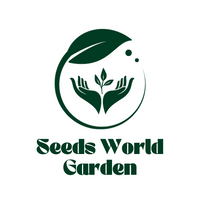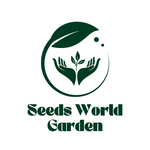Quantity: 30+ Seeds
Color: As picture
Free Shipping and Buy 2 Get 1 Free
Butternut Squash is a nutritious, sweet-tasting vegetable that is popular in many dishes. It is a great source of fiber, vitamins, and minerals. It is also high in antioxidants and has anti-inflammatory properties. The flesh of the butternut squash is creamy and mild in flavor, making it a delicious ingredient in soups, stews, and other dishes. Its orange-yellow color makes it an attractive addition to any meal.
The Butternut Squash plant is a member of the cucurbitaceae family. It is a vine plant that grows in the summer and early fall months. The squash grows on a vine and has large, bulbous fruits with thick, orange skin. Inside the skin, the flesh is orange-yellow and sweet tasting. The seeds are edible and can be roasted for a crunchy snack.
Butternut Squash is a great source of vitamins A and C, potassium, and magnesium. It is also high in dietary fiber and beta-carotene, which is important for healthy skin and eyesight. Eating butternut squash can also help reduce inflammation, promote digestion, and protect against diseases.
The seeds of the butternut squash can also be eaten or dried and used for baking or making soups. Squash seeds are a great source of healthy fats, protein, and dietary fiber and are often added to salads and other dishes for an extra crunch.
Butternut Squash is a nutritious, tasty vegetable that can be enjoyed in a variety of dishes. It is a great source of vitamins, minerals, and fiber and can help reduce inflammation and protect against disease. The seeds are nutritious and can be used for baking or making soups. Eating Butternut Squash is an easy way to add flavor, nutrition, and color to any meal.
How to Grow Your :
1. Soak in water for 24 to 48 hours before you t them. This allows moisture to penetrate the coat and leads to swelling of the ’s parts to spur germination.
2. Find a location with well-drained, organic-rich, sandy or silt loam and with a minimum average temperature of about 60 degrees Fahrenheit during the t’s early growth. The most favorable temperature range is between 75 to 80 degrees. The t should ideally receive six hours of sun per.
3. Till the soil to rid it of weeds and to increase air circulation. Apply compost to the soil after tilling.
4. Place two or three in a hole about ½ to 1 inch deep in the soil along a fence or under a 6-foot-tall trellis form. The holes should be 15 to 23 inches apart and rows 3 to 5 feet apart.You can also start in small plastic pots in a commercial soil mix.
Shipping:
All orders Free Shipping and Buy 2 Get 1 Free. Normally North American delivery time will take 7-14 days (shipping delays due to large orders will add 1-3 weeks depending on time). Other areas please wait 14-28 days for the order to arrive.
RETURN POLICY
We have a 30-day return policy, which means you have 30 days after receiving your item to request a return.


